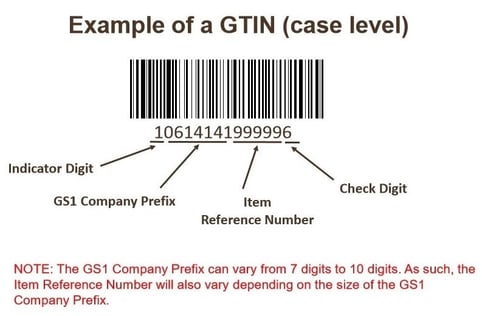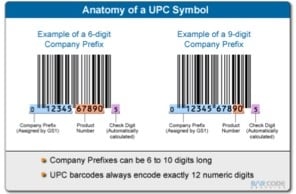GS1 is the international, non-profit standards organization whose primary goal is to provide a common language through which organizations can identify, capture, and share information related to products and services throughout the supply chain. Known best for barcodes, GS1 introduced the barcode in 1974 to bring optimal efficiency and transparency to the supply chain. Today, the barcode standard is used by retailers, distributors, manufacturers, and suppliers worldwide.
To put a barcode on an item you wish to be scannable anywhere in the world, you must work with GS1 – which is why GS1 works with over a million companies of every size.
What is a GTIN?
A major component of the GS1 system, a global trade item number (GTIN) is a number a company uses to identify its trade items. GS1 defines trade items as products or services that are priced, ordered, or invoiced at any point in the supply chain, including individual items as well as their associated packaging (e.g., consumer unit, inner pack, case, pallet).
After you’ve assigned a GTIN to one of your trade items, you now have a common language for your departments, entities, and supply chain partners to identify the item and communicate information about it. If your company leverages international suppliers or sells to customers in other countries, you can use your GTINs to identify your products in any country, without restrictions or misinterpretations.
Incorporating Your GTINs into Barcodes and RFID Tags
The two most common ways to incorporate your GTINs are by encoding them into either barcodes or EPC/RFID tags. You do this by blending a GTIN number into your normal barcode or EPC/RFID numbers alongside your company prefix. To illustrate, below is how a GTIN number appears as part of a barcode for an item packed at the ‘case’ level.

Using GTINs for Online Trade
The GTIN is required by the Global Data Synchronization Network™ (GDSN) and must appear in many types of e-commerce transactions. This global identification system of GS1 ensures that the GTIN placed in a barcode or Electronic Product Code™ (EPC®) is the same information contained in the corresponding electronic documents processed by trading partners.
Get Started Today
Working with your suppliers, partners, customers, and consumers has never been easier, thanks to the GTIN. You can source and sell trade items using a well-established system around the world, knowing that each GTIN provides relevant data to any GS1-compliant application via a simple scan. To ensure your business and customers trust what you’re buying and selling, you should incorporate the use of GTINs for all your trade items as soon as possible. For more information, contact us today.









Leave a comment